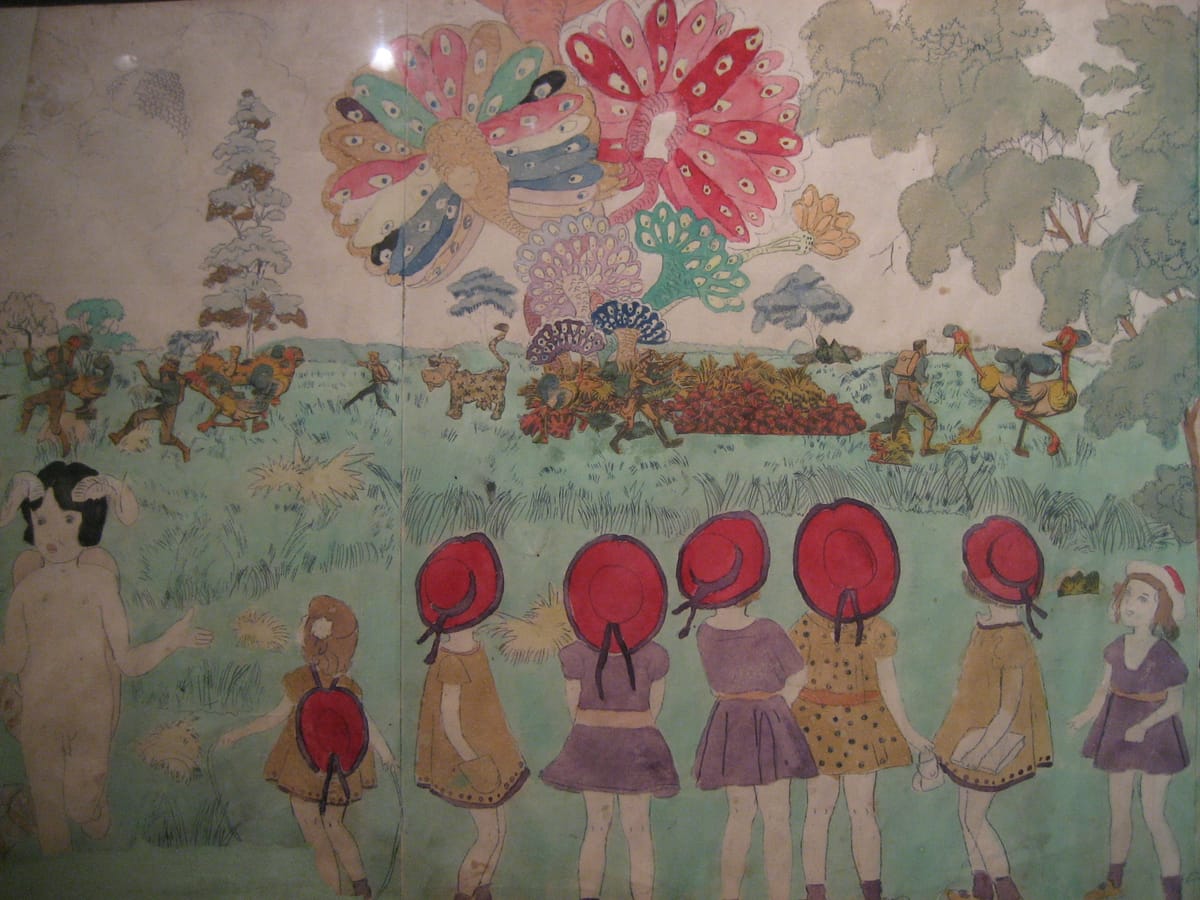The Lost Children – Henry Darger’s Hidden Kingdom
Henry Darger created a secret world of 15,000 pages and drawings, a kingdom of innocence and horror that blurs the line between fantasy and confession.

Henry Darger’s pages revealed beauty, obsession and the dark echo of lost children.
Chicago, 1973. When 81-year-old Henry Darger died alone in his small one-room apartment, his life seemed to end as quietly as it had begun. He was a poor janitor, a recluse remembered by his neighbors mostly for his odd behavior and habit of muttering to himself.
When he died, his landlord entered the room for the first time in decades. Inside there were not just piles of newspapers and broken furniture. What was discovered was no longer the clutter of an ordinary hermit.
From the depths of that room emerged another world. A world hidden on paper, across thousands of pages, hundreds of drawings and paintings. It was a kingdom whose darkness was both fascinating and terrifying.
The Discovery, A Paper Kingdom
Before the landlord’s eyes opened a sight no one could have imagined. In the small apartment, among old cardboard boxes and cabinets, lay a 15,000-page manuscript titled:
Beside it were hundreds of drawings and huge collages, painted in bright pastel colors, depicting children fighting soldiers, giants and demonic creatures. In other images the children were hanged, mutilated and tortured with disturbing precision.
The images were at once fairy-tale-like and nightmarish, like beautiful postcards someone had deliberately stained with blood.
What had been locked in the hermit’s mind for decades was now exposed to others. And the question arose, what had Henry Darger really been doing inside those four walls when no one was watching?
A Real Connection to a Lost Child
At the center of Darger’s vast manuscript and its illustrations appeared a figure who was not just a product of imagination. She was Elsie Paroubek, a five-year-old girl from Chicago who disappeared in the spring of 1911 and was found weeks later, murdered, in the Des Plaines River.
The case shocked the entire city and filled the local newspapers. Henry Darger, then nineteen years old, carefully saved the clippings and wove Elsie’s story into his Vivian Girls epic.
The question lingered, why did he choose a real girl whose life had ended violently? Was it only the act of an obsessive collector, or something darker, a secret bond with reality?
Researchers later found other names in Darger’s texts, possibly connected to missing children and old police cases. But no proof was ever established, only speculation. Was this coincidence, or did his vast fantasy reveal something he could never say aloud?
Voices in the Apartment
Henry Darger lived for decades in the same small room on the north side of Chicago. He went to church, did his heavy cleaning work, and returned home alone each evening. The doors stayed closed, the curtains drawn.
But neighbors told strange stories. They said they heard him talking loudly at night, arguing with someone invisible. At times his voice rose in anger, and moments later softened, as if comforting a child.
Some claimed they heard children’s voices. They were sure, even though Darger lived alone.
When his apartment was finally opened after his death, the walls were lined with newspaper clippings of missing children, religious images, and thousands of pages from his imaginary world. Every corner spoke of obsession, and no one could tell anymore where his reality ended and his kingdom began.
Art or Confession
The art world has since raised Henry Darger to the status of a legend of outsider art. His immense manuscript and hundreds of drawings are displayed in museums around the world, praised as a unique glimpse into a man’s inner universe.
Many interpret his work as an outpouring of trauma and loneliness. Darger lost his mother as a child, spent years in institutions, and lived the rest of his life in isolation. His creations are often seen as an attempt to impose order on chaos, to build a world where children fight against evil.
Yet something in his story remains uneasy.
Why did he use the name of a real murdered girl?
Why did the violence in his drawings always fall upon children?
Why did neighbors believe they heard children’s voices?
Darger never explained what his world meant. He died without knowing that his private obsession would become a public mystery.
And so the question remains:
Was Henry Darger only a hermit artist who hid his pain on paper? Or were his drawings and stories something more than fantasy, a shadow hinting at a reality we will never know?
Article by Mimo Warto
© ART Walkway 2025. All Rights Reserved.







